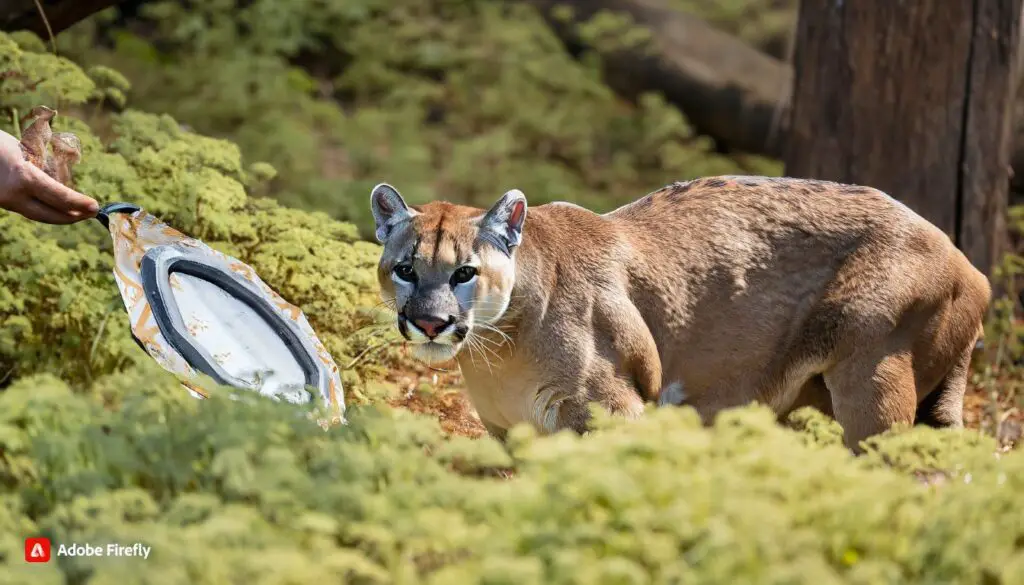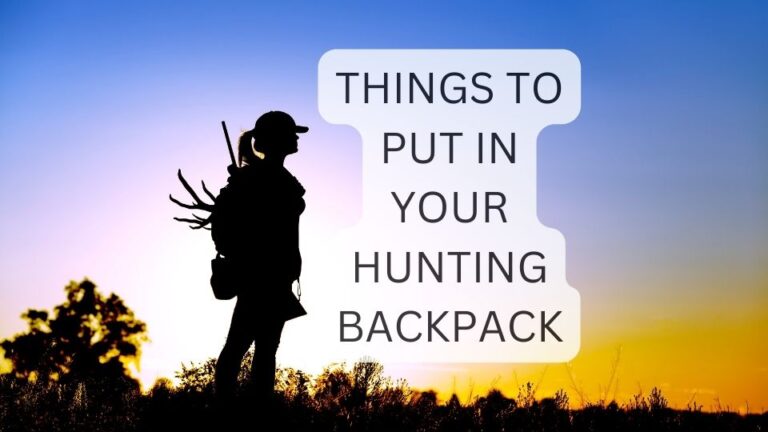
Baiting cougars and mountain lions (also known as pumas or panthers) is a practice often employed by wildlife researchers and, in some regions, by hunters for population management and conservation efforts. However, it’s essential to understand the ethical and legal considerations surrounding this activity and ensure that it is conducted responsibly and within the bounds of applicable regulations. In this comprehensive guide, we will explore the art of baiting cougars and mountain lions, including its purpose, baiting strategies, safety measures, and ethical considerations.
Understanding Cougar and Mountain Lion Baiting:
1.1 The Purpose of Baiting:
- Baiting cougars and mountain lions serves various purposes, including research, monitoring populations, studying behavior, and, in some cases, hunting.
- It allows for the collection of valuable data and insights into these elusive and solitary big cats.
1.2 Legal and Ethical Considerations:
- The legality of baiting cougars and mountain lions varies by location, so it’s essential to research and understand local laws and regulations.
- Ethical considerations include ensuring the welfare of the animals involved, minimizing risks to non-target species, and adhering to research or hunting ethics.
Selecting the Right Bait:
2.1 Natural Prey Animals:
- Cougars and mountain lions primarily prey on deer and other ungulates. Using parts of ungulate carcasses as bait can be effective.
- Baiting with natural prey animals aligns with the big cats’ natural feeding behaviors.
2.2 Commercial Lures and Scents:
- Commercially produced lures and scents are available for baiting cougars and mountain lions.
- These products mimic the scent of prey animals or can create curiosity in the big cats.
2.3 Homemade Bait Recipes:
- Some researchers and hunters create homemade baits using ungulate parts or other meat sources.
- Homemade baits can be tailored to specific research or hunting objectives.
Setting Up Bait Stations:
3.1 Choosing the Location:
- Select baiting locations based on knowledge of cougar and mountain lion territories, travel routes, and activity patterns.
- Ensure that the location is safe for both the big cats and humans.
3.2 Bait Station Types:
- Bait stations can be ground-based or suspended. Ground stations involve placing bait directly on the ground, while suspended stations may use tree branches or platforms.
- The choice of station type depends on research or hunting objectives and safety considerations.
3.3 Safety Precautions:
- Safety is paramount when baiting cougars and mountain lions.
- Implement safety measures to minimize human-wildlife conflicts, such as secure storage of bait and remote data collection methods.

Effective Cougar and Mountain Lion Baiting Strategies:
4.1 Timing and Seasonality:
- Timing baiting activities to align with the big cats’ natural behaviors and seasonal feeding patterns can enhance effectiveness.
- Consider local regulations and environmental factors when planning baiting.
4.2 Concealment and Scent Control:
- Conceal bait stations to prevent non-target species from accessing the bait.
- Employ scent control measures to reduce human scent around the bait station.
4.3 Monitoring and Data Collection:
- Regularly monitor bait stations to collect data, including camera trap images, tracks, and observations.
- Data collection aids in research objectives and population management efforts.
Cougar and Mountain Lion Baiting FAQ’s:
5.1 Is baiting cougars and mountain lions legal in my area?
- Legalities vary by location, so it’s essential to research and adhere to local regulations and permit requirements.
5.2 What types of bait are commonly used for cougars and mountain lions?
- Common baits include ungulate carcass parts, commercial scents, and homemade bait mixtures.
5.3 How far from a bait station should I place the bait?
- The distance can vary but should be within close proximity to the bait station to ensure the big cats are lured to the designated observation or hunting area.
5.4 How often should I replenish the bait?
- Replenish bait as needed, depending on consumption and environmental factors. Regular monitoring helps determine when to add more bait.
5.5 What are the natural prey animals of cougars and mountain lions?
- Natural prey includes deer, elk, and other ungulates, which should be considered when selecting bait.
5.6 Can baiting negatively impact cougar and mountain lion behavior?
- Over-reliance on bait can alter feeding behaviors and increase the risk of habituation or dependency, which should be avoided in research and management.
5.7 How can I minimize the risk of attracting non-target species?
- Employ safety measures, including secure bait storage, to prevent access by non-target species like bears or scavengers.
5.8 Are there alternatives to baiting for studying cougars and mountain lions?
- Alternative methods include camera trapping, tracking, and scat analysis, depending on research objectives.
5.9 What are the ethical considerations when baiting cougars?
- Ethical considerations involve ensuring the welfare of the big cats, minimizing risks to non-target species, and adhering to research or hunting ethics.
5.10 How can I stay safe while baiting mountain lions?
- Safety measures include proper bait storage, maintaining distance, and understanding cougar behavior to minimize human-wildlife conflicts.

Baiting and Calling Cougars: Effective Strategies
Hunting cougars (mountain lions) can be an exhilarating but challenging pursuit. These elusive predators are known for their stealth and elusive nature. Using predator bait and deer as a lure can be an effective strategy when hunting cougars, but it requires careful planning and knowledge of the cougar’s behavior.
In this guide, we will explore the best ways to bait and call cougars, safety considerations, and the role of predator bait and deer in cougar hunting.
1.1 Selecting the Right Location:
- Research and scouting are essential for identifying cougar territories and travel routes.
- Choose locations with signs of recent cougar activity, such as tracks, scat, or kill sites.
1.2 Using Predator Bait:
- Predator bait, often made from animal parts or commercial scents, can be used to attract cougars.
- Place the bait strategically in a hidden location, ensuring it’s upwind from your position.
1.3 Utilizing Deer Calls:
- Cougars often prey on deer, so using deer calls can attract cougars looking for potential prey.
- Practice realistic deer calls to increase your chances of luring a cougar.
Safety Considerations When Hunting Cougars
2.1 Avoiding Eye Contact with Cougars:
- Making eye contact with a cougar can be seen as a threat and may provoke an attack.
- Keep your gaze averted and appear non-threatening.
2.2 Staying Vigilant and Prepared:
- Cougars are known for their ambush hunting style, so always be prepared for a sudden encounter.
- Carry bear spray or other deterrents as a safety measure.
2.3 Understanding Cougar Behavior:
- Study cougar behavior to anticipate their movements and actions.
- Learn about signs of aggression and defensive postures in cougars.
Understanding Cougar Bait and Lure
3.1 What Is Cougar Bait?
- Cougar bait typically consists of animal parts, scents, or calls that mimic natural prey.
- It is used to attract cougars to a specific location for hunting or research.
3.2 Where Do Cougars Live?
- Cougars inhabit a wide range of habitats, including forests, mountains, deserts, and swamps.
- Research local cougar populations and territories for effective hunting.
3.3 What Attracts Cougars?
- Cougars are primarily attracted to prey animals like deer, so using deer calls or predator bait can draw them closer.
Additional Insights and Tips for Cougar Hunting
4.1 The Best Bait for Cougars in Red Dead Redemption 2 (RDR2):
- In the video game Red Dead Redemption 2, predator bait and potent herbivore bait can be used to attract cougars. Experiment with different bait types for best results.
4.2 What Is a Cougar Scared Of?
- Cougars are typically wary of larger predators like bears and humans. Avoiding direct confrontation and appearing larger can deter them.
4.3 Natural Predators of Cougars:
- Adult cougars have few natural predators, but young cougars may fall prey to larger carnivores like bears and wolves.
4.4 Scents That Attract Cougars:
- Cougar lures and scents are available for hunting, but using natural prey scents can also be effective.
4.5 Using Predator Bait to Spawn Cougars:
- In some video games like Red Dead Redemption 2, players can use predator bait to spawn cougars in specific locations for hunting or challenges.
Summary
Hunting cougars can be a thrilling experience, but it demands caution, respect for wildlife, and a deep understanding of their behavior and habitat. By using predator bait and deer calls strategically and prioritizing safety, you can increase your chances of a successful cougar hunting expedition.
Baiting cougars and mountain lions can be a valuable tool for research, conservation, and hunting when conducted responsibly and ethically. Understanding the purpose, selecting the right bait, setting up bait stations effectively, employing safety precautions, and adhering to legal and ethical considerations are essential for a successful and responsible experience when baiting these magnificent big cats.






